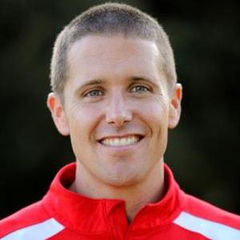Physically confident and competent children are active for life, but far too many of America’s youth are physically inactive. Health and fitness professionals are in a great position to help kids become more physically active and, as a result, more physically literate.
To begin, consider how academic literacy is developed. Through the process of neural development and targeted practice, we eventually learn how to read sounds and make them into words. We then learn to read words together in sentences, and sentences then form together to create paragraphs. Paragraphs are chained together into stories and, over time, we develop a love and appreciation for reading that lasts a lifetime.
Physical literacy can be developed in much the same way. The “sounds, words, sentences, paragraphs and stories” of movement can be found in the specific building blocks associated with overall physical development.
Free time play and readily available physical education classes once served to introduce these building blocks of physical literacy. Currently, increased levels of inactivity and early sports specialization hinder the introduction and development of these building blocks.
As health and fitness professionals, we need to be able to introduce the foundations of movement, much like classroom teachers introduce the skills of literacy to help kids create a broad movement vocabulary. With this vocabulary, they can make fitness and wellness a lifelong, enjoyable story.
Let’s examine the components of the foundational building blocks or “sounds” of developing physical literacy.
Foundational Motor Abilities
Foundational motor abilities or (FMAs) provide the foundation for a child to interpret sensory information from their environment and have the strength, balance and stability to respond appropriately. Through the development of FMAs in an enriching sensory environment (lots of stuff to play and interact with), young children become more purposeful and efficient with movement.
FMAs begin to develop at birth and continue, to a degree, throughout one’s lifetime. However, because a young child’s nervous system is highly moldable or “plastic,” the most critical time to match brain development with physical development is during early childhood. By the time a child reaches the age of seven, the nervous system has become insulated through the process of myelination. The movement strategies they have learned through interacting with their environment begin to become reflexive, efficient and purposeful.
The more opportunities a young child has to move and physically explore his or her environment, the more proficient he or she becomes at a wide array of physical skills.
Conversely, when a young child is inactive or is not offered a variety of options for physical activity, his or her vocabulary of foundational physical skills becomes limited. After nerve myelination, it becomes more difficult to introduce and develop new foundational physical skills.
To help ensure we create opportunities for young children to develop a wide array of FMAs, it’s important to understand the primary components of this foundational building block of physical literacy. FMAs are comprised of:
- Perceptual motor skills
- Base functional strength and power
- Postural stability and mobility
Perceptual Motor Skills
From the time children are born, they are learning to perceive and respond to the sensory feedback received from exploring their environment. Sight, sound, feel, orientation in space and other perceptual feedback help infants learn how to navigate their surroundings. First, by improving the accuracy of the sensory input, then by developing accurate motor output. The relationship of sensory input and motor output is observed in the development of specific perceptual motor skills.
Following are nine perceptual motor skills that allow children to interpret sensory information from their environment and create an appropriate physical action.
Creating active, exploratory, play-based experiences that enable children to interact with their environment through their senses can help lay a critical foundation for lifelong physical literacy.
Suggested activities are provided after each skill.
- Body Awareness: An ability to understand the parts of the bodies and how they move (“Simon Says” and body-part identification games)
- Directional Awareness: An ability to differentiate between the left and right sides of the body and move in all planes of motion (“Simon Says” and reactionary games/drills involving directions)
- Spatial Awareness: A sense of how much space one’s body takes up and moves comfortably around other people and objects (Evade games in limited space, avoid touching cones or other obstacles, counting stride games)
- Temporal Awareness: A sense of timing and rhythm (Music, dancing, tempo activities)
- Visual Awareness: An ability to visually focus and track objects (Games/drills isolating sight)
- Vestibular Awareness: An internal sense of one’s body position in relation to gravity (Games/drills involving spinning, re-orientation of the body, eyes closed)
- Auditory Awareness: An ability to accurately respond to sound (Games/drills isolating auditory feedback)
- Tactile Awareness: An ability to respond to touch in competitive or cooperative situations (Partner tag, dancing, partner mirroring)
- Proprioceptive Awareness: An ability to interpret the internal sense of where the body is in space (Balance drills, activities on different surfaces, movement accuracy drills)
These perceptual motor skills form the foundation for children to physically act and react appropriately to the sensory demands they perceive in their environment.
The first installment of this six-part series examined the causes and effects of physical inactivity among youth, and the next installment of this six-part series examines the other critical FMAs—base functional strength and power, and postural mobility and stability.
In an effort to help educators integrate health and fitness into classroom learning, ACE offers age-appropriate curriculum for children in grades 3-5 and grades 6-8. Check out our FREE Operation FitKids® curriculum, which is aimed at teaching students about the dangers of being overweight and the importance of leading a healthy lifestyle.




 by
by 








 by
by